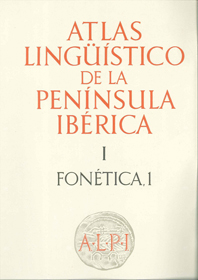The Atlas Lingüístico de la Península Ibérica [Linguistic Atlas of the Iberian Peninsula] (ALPI) corresponds to what geo-linguists call a large domain atlas, just like Jules Gilliéron’s Atlas Linguistique de la France (ALF) and Karl Jaberg and Jakob Jud’s Sprach- und Sachatlas Italiens und der Südschweiz (AIS), which preceded and inspired this atlas. The goal of the ALPI was to facilitate the characterization of peninsular Iberian Romance varieties. Based on Jaberg’s theoretical works, specialists have clearly differentiated between the objectives of a large domain atlas and those of a small domain atlas.

This distinction stems from some clear methodological differences: the objective of a large domain atlas is to collect materials that allow for the linguistic characterization of an extensive territory. This requires the establishment of a broad and wide survey network, in which the points may not be too close to each other, and a questionnaire that is general enough to be adapted to different geographies and cultures. In contrast, since it deals with a smaller area, a small domain atlas can and must have a dense, tight survey network, with enough locations to draw a net that covers the whole area, and it uses a specific questionnaire that adheres very closely to the cultural reality that it seeks to study.



